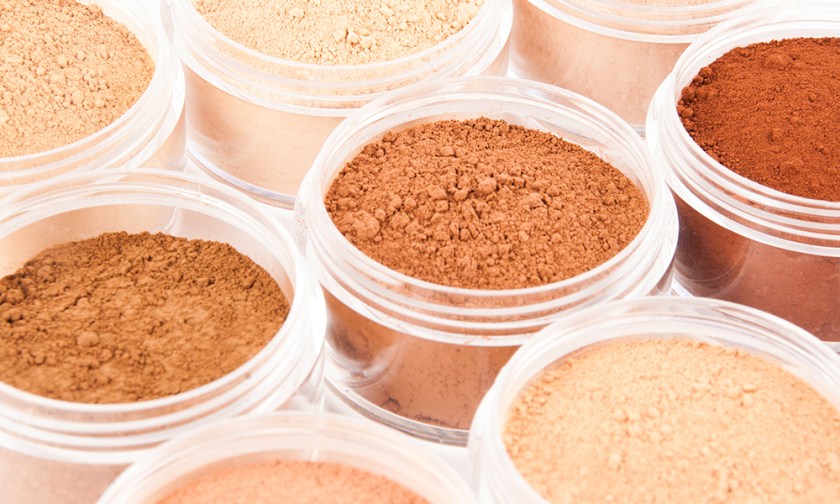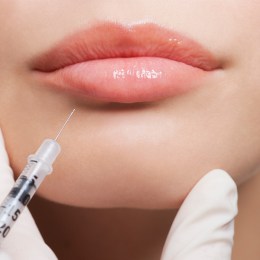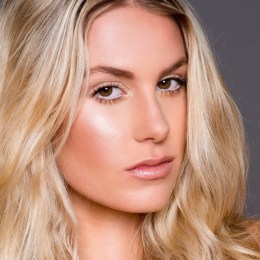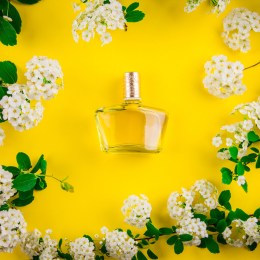There is a minefield of mineral makeup on the market. But what are the differences between them? Which should you stock? And…What does the future hold for mineral makeup?
The 2015 NPD Year in Review and Global Trend Report found that consumers were twice as likely to buy a premium product if natural and organic. In light of this, it is no wonder mineral makeup (first available in the 1970s) is here to stay. Interestingly, the NPD also reported that 93% of buyers prefer to purchase these from specialist experts such as makeup artists, dermatologists and clinicians. It is therefore not surprising that companies are developing their mineral makeup range according to spending habits. While good quality classic mineral formulas are safe for nearly all skin types, the new guard spruces up the scene with advanced formulas, revolutionary ingredients, targeting individuals concerns.
Penny Pinchers Vs. Premium Powders
The ingredient lists in a spread of mass-market minerals differ from pot to pot. A common “killer-filler” among the supermarket options is Magnesium Silicate– The potentially carcinogenic chemical more commonly known as ‘talc.’
“Talc is a cheap filling agent that lots of brands use,” Explains Joanne Healy, senior educator at Advanced Skin Technology. “It can be congestive and cause breakouts. Some brands use still use parabens (preservatives) too.”
While ingredients among lower end brands vary like chalk and cheese, three premium brands, certified among the best, contain exactly the same ingredients in their loose powder formulas.
Colorescience, Inika, and Mineral X Factor each contain:
Mica (CI 77019) Zinc Oxide (CI 77947) (+/-) Titanium Dioxide (CI 77891) Iron Oxides (CI 77491 CI 77492 CI 77499) Ultramarines (CI 77007)
“When differentiating a good brand from a dodgy brand, it isn’t the ingredients it contains, but what is left out.” Joanne clarifies. “A high quality product will contain higher percentages of these two naturally occurring substances.”
It’s true. According to Australian Consumer Laws, any product can qualify as mineral makeup if there’s zinc and titanium in the mix of ingredients. These components are physical sun blocks and antioxidants. It is widely believed that they have healing, anti- inflammatory properties.
“For most patients, mineral makeup is excellent.” Associate Professor and Dermatologist Greg Goodman concurs. “It’s my preferred choice for acne patients in particular because it doesn’t clog pores. It’s light. It’s easy. It gives good coverage. It often can be combined with good sunscreen properties and it’s excellent. I much prefer it to other creams or powders.”
Although the crème de la crème of loose mineral powders share the same ingredient list, the percentages of each one, as well how and where they are milled, differentiate them. “All true mineral makeup has SPF but it depends on the concentration of the ingredients. The higher the concentration of Titanium and Zinc, the higher the SPF,” says Joanne, “the same goes for shades of the makeup, by playing with quantities of the two main components, you can achieve different colours.”
As the staggering statistics suggest, consumers prefer their premium cosmetics to be prescribed by a professional practitioner, rather than snapped up in store. Clinicians at medispas, skin centres and wellness retreats seek to personalise the products they recommend to the specific skincare concerns of their clients. Key brands specialising in mineral makeup offer targeted treatments, without compromising purity.

1. Cosmeceutical Ingredients
Some innovative manufacturers of mineral makeup are combining their latest formulas with cutting-edge cosmeceutical ingredients. Greg Goodman confirms, “You can put a lot of beneficial compounds in mineral makeup to aid in their use. They’re on your face all day long. You might as well put them to good use.”
Cosmeceuticals are cosmetic products with biologically active ingredients containing medical properties. One of the latest releases from sun care focused US mineral makeup brand Colorescience is the Tint Du Soliel. It is a liquid formula with an SPF of 30+, and contains two of the most renowned cosmecuetical ingredients; Ceramide and Peptides. Ceramide has scientifically proven hydrating capabilities, while Peptides have proven wound healing properties. A spokesperson from the brand says: “In terms of skin benefits, out of all of our range, the Tint Du Soleil is better because of the ‘good for you’ ingredients.”
Hyaluronic Acid is another medically proven ingredient championed for intense hydration, and strengthening the skins barrier. It is used in hospitals for healing wounds, burns and ulcers. 100% organic, cruelty-free Australian mineral makeup brand, Inika offers The Certified Liquid Organic foundation. It’s a skincare/foundation hybrid combing minerals with an injection of Hyaluronic Acid.

2. Customised to Client Demographics
Mineral makeup, in its ‘classic’ loose powder form, is widely celebrated for being suitable for all skin types. But the array of consistencies and textures offered by other non-mineral counterparts make for strong competition. Contrary to the original ‘one formula fits all’ approach, mineral manufacturers are beginning to ‘change things up’ to suit specific wants and needs of customers.
Makeup artist Lisa Tedeschi creator of 100% Australian made, Australian owned makeup brand, Mineral X, developed a liquid foundation formula for mature skin in mind. “Some people, particularly those with mature skin, associate any powder with being drying. The liquid it offers our customers a dewy finish option, while still retaining the benefits of our pure mineral powder.”
The Colrescience range offers a mineral powder suited to men. Its selling point is sun protection rather than coverage, “it contains 24.1% zinc and 23.1% titanium, which is really high. There’s no colour, it’s designed to be just a light veil on the skin and is water resistant.

3. Change in Application
Applying traditional loose powder minerals requires buffing in the product with a kabuki brush in circular motions. One criticism of classic mineral makeup is its messiness, making it a less than ideal option for on-the-go touch ups. The new wave of mineral makeup addresses this issue, broadening the techniques makeup artists, therapists and clients can use to apply product.
Inika has recently released mineral powder in ‘baked’ form. Mixed as a liquid, then baked on terracotta tiles in Tuscany, it is packaged in a compact, perfect for touch-ups and travel. “Just sweep your brush across it. It can be used on its own, or it works perfectly layered with liquid foundation for a high coverage finish.” Says Anita Lange, a spokesperson from the brand. Retaining the original Inika mineral base of Zinc and Titanium Oxide, skin conditioning ingredients like Sugar Cane and Magnolia Extract were added to the mix. “But the main difference between the original and new formula is how they are applied.” She explains.
Loose powder is essential in applying the thick layers of colourless, translucent powder needed for the ‘makeup baking’ technique. The method became a social media sensation after celebrity Kim Kardashian shared her secret for flawless concealer application with extreme staying power. Those with skin conditions, unable to use non-mineral makeup, are now able to try this technique. The Mineral X makeup range offers mineral setting powder. The formula is as scientifically safe as its coloured counterpart and contains a touch of calcium.




